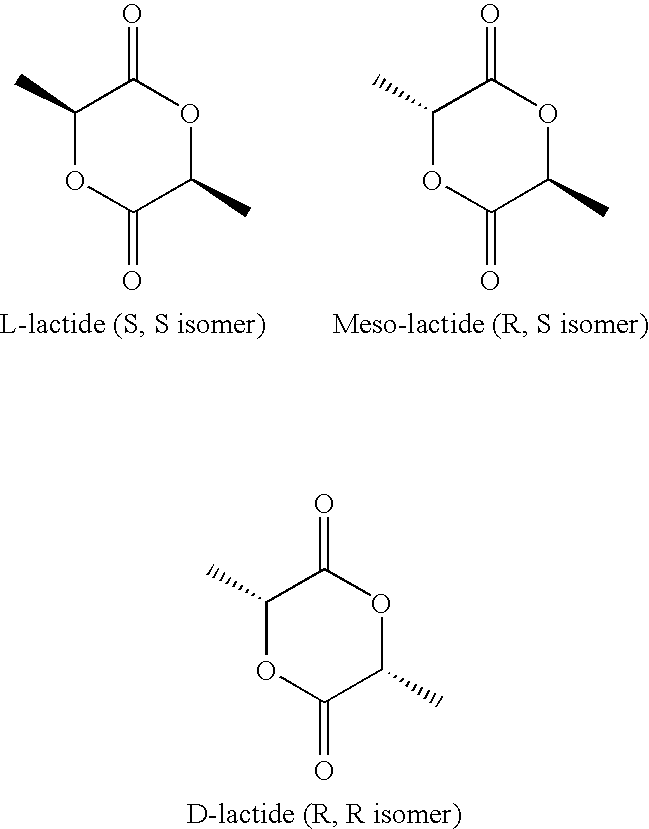Feed Supplement Delivery System
a technology of supplement delivery system and feed supplement, which is applied in the field of feeding supplement delivery system, can solve the problems of low unsaturated fatty acid content of meat and dairy products supplied by ruminants, low unsaturated fatty acid content of ruminants, and less healthy products for consumers
- Summary
- Abstract
- Description
- Claims
- Application Information
AI Technical Summary
Benefits of technology
Problems solved by technology
Method used
Image
Examples
example 1
[0058]Three-dimensional, porous scaffolds were fabricated via a solvent casting / particulate leaching method, as disclosed in Webster, S. S., et al., J. Histotechnol 2003, 26(1):57-65, incorporated by reference herein, of both poly-D,L-lactide (PDL) and poly-L-lactide-co-caprolactone (PLLA / PLC), without the inclusion of any fatty acids. Briefly, the polymer of interest was dissolved in chloroform to form a 0.05 g / ml solution. Sigmacote was then applied to casting containers (standard 10 ml glass beakers) and 1 ml of porogen (in this case NaCl) was added to the bottom of the containers. The polymer solution was then added to the containers and the solvent was allowed to evaporate at standard atmospheric conditions. Subsequently, the scaffolds were placed within a vacuum dessicator to ensure complete evaporation of the solvent. Finally, the porogen was leached from the scaffolds via immersion in deionized water.
example 2
[0059]Three-dimensional microspheres of both PDL and PLLA / PLC were fabricated via a single emulsion, solvent evaporation technique, according “Adipocyte Response to Injectable Breast Tissue Engineering Scaffolds,” AN Cavin, S E Ellis, K J L Burg, Transactions of the 30th Annual Meeting of the Society for Biomaterials, Memphis, Tenn. 2005, incorporated by reference herein. Briefly, the polymer of Interest was dissolved in dichloromethane to make a 30% solution (weight of polymer to volume of solvent). Microspheres were then made with and without linoleic acid according to the following.
[0060]Linoleic acid (C18:2) was added to the solution in the amount required to make the final solution 16.67% weight linoleic acid to volume of solvent.
[0061]The resulting solution (either with or without linoleic acid) was then poured into a 1% poly(vinyl alcohol) solution, and the microspheres were extracted after at least 12 hours of mechanical agitation. The microspheres were collected by filtrati...
PUM
| Property | Measurement | Unit |
|---|---|---|
| thickness | aaaaa | aaaaa |
| thickness | aaaaa | aaaaa |
| diameters | aaaaa | aaaaa |
Abstract
Description
Claims
Application Information
 Login to View More
Login to View More - R&D
- Intellectual Property
- Life Sciences
- Materials
- Tech Scout
- Unparalleled Data Quality
- Higher Quality Content
- 60% Fewer Hallucinations
Browse by: Latest US Patents, China's latest patents, Technical Efficacy Thesaurus, Application Domain, Technology Topic, Popular Technical Reports.
© 2025 PatSnap. All rights reserved.Legal|Privacy policy|Modern Slavery Act Transparency Statement|Sitemap|About US| Contact US: help@patsnap.com


